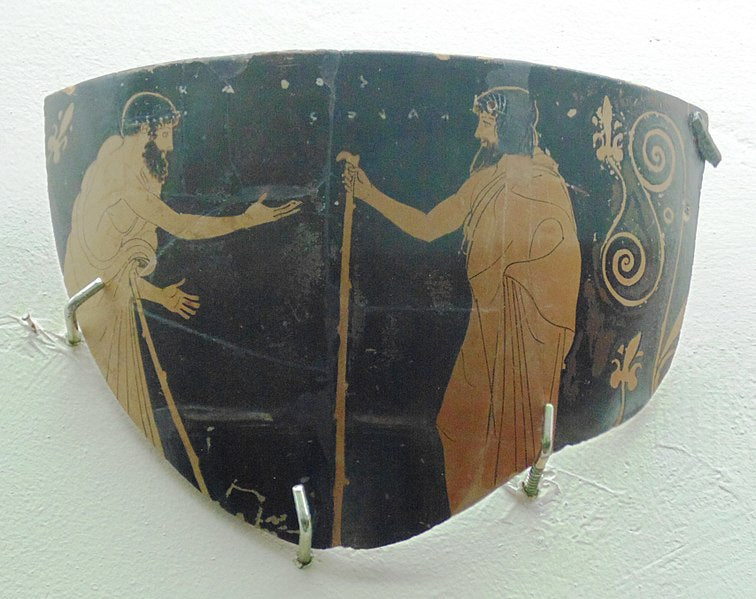
Lab Coats and the Work of Archaeologists
Lab work is a critical aspect of archaeology practice, meaning a white lab coat is an essential part of an archaeologist’s uniform.
I know, I know – we were all raised on a healthy diet of archaeologist badasses ranging from Indiana Jones, Lara Croft, and Alan Grant (that dude from Jurassic Park, admittedly not as widely regarded but an essential character in a movie that put the career field of archaeology on the map for youngsters around the globe) where there was not a white lab coat to be seen.
(Disclaimer: Archaeology has produced actual real-life badasses too. Check out Harold Bingham and Theodore Morde to get started.)
Browse Our Lab Coat Collection Now
Alas, while Hollywood may have portrayed archaeology as an exciting career of getting chased by bows and arrows and rolling boulders, playing around with a fancy whip, or wearing an awesome fedora, the truth is far from that adrenaline-coursing career that appeared through our TV screens. In fact, rather than a fedora, you are more likely to see a modern-day archaeologist kitted out in a white lab coat. Yes, that’s right.
The Hard Yards in the Lab
That is because, in fact, while dressed in a white lab coat, an archaeologist arguably does their best and most important work. This is when they gather much of the insight and analysis, and thus integrity, of any items or artifacts discovered in the field. Rarely, a piece is simply plucked from the ground, examined by the naked eye, confirmed as a fact, and then delivered to a museum.
No, it is in the lab where artifacts are observed, recorded, sorted, and liberated of their secrets and bestowed with new honesty. Simply put, it is lab work that compromises most of the time and puts meat on the bone of archaeological finds. The lab is where everything comes together, and there are a series of tasks done in the lab. Thus, the white lab coat becomes an important part of the process too.
Browse Our Lab Coat Collection Now
So, while the most famous archaeologists (sadly, fictional characters like Indiana Jones and Lara Croft) were more often than not decorated in khakis, leather jackets, and an array of weapons, the truth, at least in terms of the modern archaeologist, is that that wardrobe and accessories could not be further from the truth. Instead, they are more likely to be kitted out in a white lab coat surrounded by state-ot-the-art multi-million-euro instrumentation and computers.
Why Wear a Lab Coat?
And now, down to the nitty-gritty of where those trusted white lab coats mostly benefit modern-day archaeologists. Lab work in archaeology requires basic precautions to protect health and safety. That’s straight forward enough. Most of these precautions concern hygiene, eye protection, and avoiding cuts. Moreover, some kinds of archaeological lab work make use of chemicals that require additional precautions. That is where the real fun and games begin.
Let’s dig a little deeper and dust off some of the key reasons an archaeologist of today needs a trusty white lab coat in their wardrobe.
Browse Our Lab Coat Collection Now
-
Hygiene
It is important to remember that artifacts, bones, and other objects that archaeologists collect and bring back to the lab were once buried in dirt, often in areas far from sanitary. Consequently, they may be infested with bacteria, molds, and fungi that you can easily pick up while handling them. Don’t forget it was parasites and bacteria from handling artifacts that were thousands of years old in Egyptian tombs that actually caused the deaths of so many people and led to the creation of the Curse of the Pharaohs.
-
Cuts and Burns
Some kinds of archaeological lab work can cause cuts or burns. Knapping is the shaping of flint, chert, obsidian, or other conchoidal fracturing stone through the process of lithic reduction to manufacture stone tools. Likewise, refiring pottery gives you ample excuses to accidentally burn yourself. This is where a trusty lab coat comes in handy. Better to speckle your white lab with drops of blood from a flintknapping mishap than your favorite pair of khaki trousers!
-
Biological Hazards
Sometimes – sometimes – archaeologists work with dead animals, not just a bag of their old dug-up bones. For instance, they may be processing a dead animal to procure comparative samples for faunal osteology. This is where biological hazards raise their head. Decaying animal parts should not be thrown out with the regular garbage. It goes without saying, a trusty white lab coat is a priceless garment in matters such as this.
Browse Our Lab Coat Collection Now
- Handling Chemicals
And now to the big one. Adding to the element of an archaeologist's time in the lab are methods borrowed from the natural sciences, particularly chemistry. Who knew? It belongs to the broader research field of archaeometry. This is where scientific techniques are applied to archaeological artifacts and helps archaeologists determine artifacts’ typologies and dating, as well as preservation, variety, and origin of organic molecules. For example, many artifacts like bones and pottery are porous and absorbent, meaning they are ripe for preserving molecules and slowing down their degradation.
Most of the chemicals that archaeologists use routinely are relatively innocuous. Still, all chemicals entail some level of risk. For instance, chemicals can be flammable, acidic, explosive, or corrosive. Therefore, you need to know the safe labeling, handling, disposal, and cleanup of them. A favorite among archaeologists is a solvent called acetone that, you guessed it, helps conserve artifacts.
Commonly used chemicals are acetic acid, citric acid, and hydrochloric acid. These are used to clean calcite build-ups from artifacts. But of course, some archaeologists do work with some big guns. To aggressively scrub some artifacts, toxic acids like tetra-bromide ethylene, zinc bromide, and cadmium-potassium iodide are needed. While another bad boy called agua regia even cuts through glass.